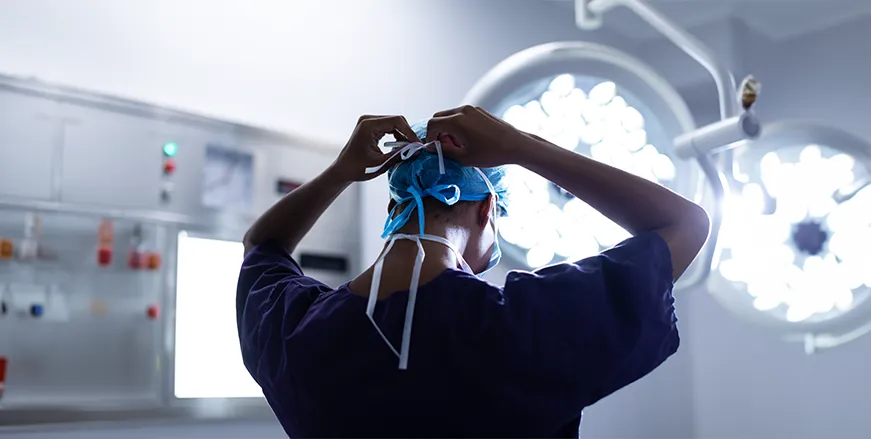Male Breast Reduction: Addressing Concerns and What to Anticipate

Introduction
Gynecomastia, an enlargement of male breast tissue, affects an estimated 30% of men during their lifetime1. Although typically benign, the condition often carries emotional and physical burdens. This article aims to address concerns about male breast reduction surgery and set expectations to guide you through the process effectively.
Understanding Gynecomastia
Prevalence and Causes
Gynecomastia can occur at any age and is commonly seen in infancy, adolescence, and in men over 50 years old2. Various factors contribute to the condition:
- Hormonal Imbalance: An imbalance between estrogen and testosterone levels can result in breast tissue growth3.
- Medications: Drugs like anti-androgens, antipsychotics, and certain heart medications can contribute to the condition4.
- Health Conditions: Liver or kidney disease, thyroid issues, and even tumors can lead to gynecomastia5.
True Gynecomastia vs. Pseudogynecomastia
It's essential to distinguish between true gynecomastia, which involves glandular tissue growth, and pseudogynecomastia, resulting from fat accumulation. The treatment for each type differs significantly.
Who is a Candidate for Male Breast Reduction?
Factors Affecting Candidacy
Being a candidate for male breast reduction involves more than experiencing breast enlargement. Considerations include:
- Age: Ideal candidates are usually adults, as adolescence-induced gynecomastia often resolves on its own6.
- Health: Overall health, including the absence of certain diseases or conditions, is assessed before surgery7.
- Psychological Readiness: Understanding the procedure and setting realistic expectations are critical.
Consultation is Key
An initial consultation, either in-person or virtually, is essential for diagnosis and treatment planning. Your surgeon will guide you through the medical history review, physical examination, and may recommend imaging studies like mammograms or MRIs.

Types of Male Breast Reduction Procedures
Liposuction-Assisted
Liposuction-assisted surgery is effective for pseudogynecomastia, where excess fat rather than glandular tissue is the issue. The procedure involves minimal scarring and quicker recovery times8.
Excision Technique
When glandular breast tissue or excess skin must be removed, the excision technique is preferable. This may involve a longer recovery period and visible scarring9.
Combination Approach
In some cases, both liposuction and excision may be used for optimal results. Your surgeon will discuss the best method for you during the consultation phase.
Preparing for the Procedure
Medical Tests
After your initial consultation, diagnostic tests such as mammograms, ultrasounds, or blood tests might be recommended to rule out underlying conditions10.
Lifestyle Changes
Quitting smoking and limiting alcohol are often recommended, as both can affect surgery outcomes and healing11.
Medications
Discuss all medications you're taking with your surgeon, as some drugs might need to be paused or adjusted before the surgery12.
What to Expect During the Surgery
Anesthesia
Local anesthesia with sedation or general anesthesia may be used, depending on the extent of the procedure.
Surgical Procedure
The surgery usually takes between 1 to 3 hours. Your surgeon will make incisions, remove excess tissue or fat, and may reshape the remaining tissue before closing the incisions.
Immediate Post-Op
You'll be moved to a recovery room for monitoring before you're cleared to go home or to your lodging, especially important for medical tourists who may not have the luxury of multiple follow-up visits.

Post-Operative Care
Remote Monitoring
Given the focus on medical tourists, many healthcare providers offer telemedicine options for remote check-ins post-surgery13.
Garments and Bandages
Special post-operative garments may be needed to support healing and control swelling. Details on how to manage these will be provided before you leave the healthcare facility14.
Pain Management
Prescription or over-the-counter medication may be advised for pain management. Follow all dosing and safety guidelines strictly15.
Activity Limitations
limitations on physical activities to ensure the body has ample time to recover. These limitations vary depending on the type of surgical procedure and individual health condition but tend to follow a general trajectory16.
Immediate Post-Surgery
During the first 48-72 hours following surgery, physical activity should be minimized. Most medical advice recommends only essential movement like walking to and from the bathroom.
Week One
In the first week post-surgery, light walking is generally encouraged to promote blood flow and reduce the risk of blood clots. However, it's crucial to avoid any strenuous activities, including lifting objects over 10 pounds, jogging, or engaging in aerobic exercise.
Weeks Two to Four
As you enter weeks two to four post-surgery, you may start incorporating more physical activity, but it's essential to consult your healthcare provider. They can provide guidelines tailored to your specific surgical and healing situation.
One Month and Beyond
After one month, most patients receive clearance for more vigorous activities like jogging, swimming, or weight lifting. However, it's critical to get this clearance from your healthcare provider, ensuring that your healing process is proceeding as planned.
Special Considerations for Medical Tourists
For those traveling abroad for surgery, activity limitations take on added importance. Long-haul flights can exacerbate risks of blood clots or complications. It's advisable to discuss your travel plans in detail with your healthcare provider to understand when it would be safe to undertake air travel post-surgery. 16.
Risks and Complications
Anesthesia Risks
All surgical procedures carry a risk related to anesthesia. Be sure to disclose your complete medical history to mitigate this risk17.
Scarring
Visible scarring is possible, although modern techniques have significantly reduced this risk18.
Infection
A critical consideration for medical tourists is the risk of infection, particularly if you plan to travel soon after the procedure19.
Conclusion
Choosing to undergo male breast reduction is a significant decision that requires thorough research and consultation with qualified professionals. Quality Care Global offers a network of healthcare providers and simplifies the steps of travel and post-operative care for medical tourists.. The key to a successful outcome lies in informed decision-making and meticulous planning.
1 "Gynecomastia," Mayo Clinic, Mayo Clinic Guide ↩ 2 "Epidemiology of Gynecomastia," Journal of Clinical Endocrinology & Metabolism, Journal Article ↩ 3 "Hormonal Imbalance and Gynecomastia," National Institutes of Health, NIH Study ↩ 4 "Drugs Inducing Gynecomastia," Pharmacology Journal, Pharmacology Study ↩ 5 "Gynecomastia and Associated Diseases," Journal of Internal Medicine, Journal Article ↩ 6 "Adolescent Gynecomastia," Pediatrics Journal, Pediatrics Article ↩ 7 "Preoperative Evaluation for Gynecomastia Surgery," Annals of Surgical Oncology, Journal Article ↩ 8 "Liposuction for Gynecomastia," Aesthetic Plastic Surgery Journal, Journal Article ↩ 9 "Surgical Techniques in Gynecomastia," Plastic and Reconstructive Surgery Journal, Journal Article ↩ 10 "Preoperative Tests in Gynecomastia," Annals of Surgical Oncology, Journal Article ↩ 11 "Impact of Smoking and Alcohol Use on Surgical Outcomes," Archives of Surgery, Journal Article ↩ 12 "Impact of Medication on Surgery," Drug Safety Journal, Journal Article ↩ 13 "Telemedicine in Post-Operative Care," Journal of Medical Systems, Journal Article ↩ 14 "Effectiveness of Compression Garments," Plastic and Reconstructive Surgery Global Open, Journal Article ↩ 15 "Pain Management After Surgery," Pain Management Nursing, Journal Article ↩ 16 "Postoperative Activity Restrictions," Journal of American College of Surgeons, Journal Article ↩ 17 "Risks of Anesthesia," Anesthesia & Analgesia, Journal Article ↩ 18 "Reducing Scarring After Surgery," Journal of Cutaneous and Aesthetic Surgery, Journal Article ↩ 19 "Postoperative Infections: Risk and Prevention," Surgical Infections, Journal Article ↩

